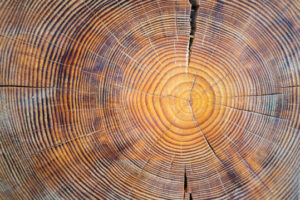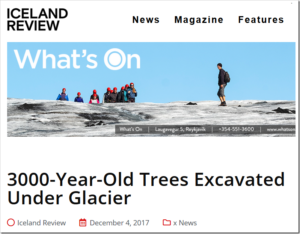by S. McIntyre, Dec13, 2023 in ClimateAudit
MBH98 used three Jacoby tree ring chronologies from Alaska: Four Twelve (ak031) – discussed here, Arrigetch (ak032) and Sheenjek (ak033). Sheenjek will be discussed in this article.
In our compilation of MBH98 in 2003, we observed that the Sheenjek chronology archived at NOAA Paleo was not the same as the “grey” version used in MBH98. While we used the MBH98 version to benchmark our emulation of the MBH98 algorithm, we used the version archived at NOAA in our sensitivity analysis, both in our 2003 article and in our early 2004 submission to Nature. In his reply to our submission, Mann vehemently protested that the “introduc[tion of] an extended version of another Northern Treeline series not available prior to AD 1500 at the time of MBH98” “introduce[d] problems into the important Northern Treeline dataset used by MBH98”:
Finally, MM04 introduce problems into the important Northern Treeline dataset used by MBH98. Aside from incorrectly substituting shorter versions of the “Kuujuag” and TTHH Northern Treeline series for those used by MBH98, and introducing an extended version of another Northern Treeline series not available prior to AD 1500 at the time of MBH98, they censored from the analysis the only Northern Treeline series in the MBH98 network available over the AD 1400-1500 interval, on the technicality that it begins only in AD 1404 (MBH98 accommodated this detail by setting the values for AD 1400-1404 equal)
The other “Northern Treeline series” referred to here was Sheenjek chronology ak033.crn. I checked Mann’s assertion alleging that the data was “not available prior to AD1500 at the time of MBH98”. This was contradicted by NOAA, who confirmed that the chronology that we had used had been available since the early 1990s.
In the figure below, I’ve compared three Sheenjek chronology versions:
- the MBH98 version from 1580-1979 (plus 1980 infill);
- the ModNegExp chronology (dplR) calculated from measurement data (ak033.rwl), which, in this case, has been available since the 1990s. It covers period 1296-1979.
- the archived chronology at NOAA (ak033.crn). Also covering the period 1296-1979.

The issues relating to Sheenjek are different than observed at Four Twelve.
Continuer la lecture de Sheenjek, Alaska: A Jacoby-MBH Series



